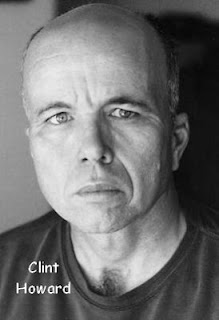Back to the movie. The Greatest Show on Earth (1952) was Cecil B. DeMille's (1881 - 1959) second to last work as director, and it won the Best Picture and Best Writing Oscars in 1953. It had one heckuva all-star cast. Charleton Heston, Betty Hutton, James Stewart, Cornell Wilde and Dorothy Lamour.
That's enough about the stars. Here are some important players.
Gloria Grahame (1923 - 1981) played the part of Angel, who trained the elephants. Gloria was quite a star, but her career was cut short by cancer. Her first feature film was Blonde Fever (1944) starring Mary Astor and Phillip Dorn, and then she worked with Katharine Hepburn and Spencer Tracy in Without Love (1945). She next plays Violet the vamp in It's a Wonderful Life (1946), her first film with James Stewart.
The next year, Grahame was in It Happened in Brooklyn with Frank Sinatra, Peter Lawford and Kathryn Grayson, plus Jimmy Durante. Those were the days! 1947 was a great year for her. She was in Crossfire with the three Roberts...Young, Mitchum and Ryan. Then Song of the Thin Man with William Powell and Myrna Loy, and Merton of the Movies with Red Skelton.
In 1950 she got to co-star with Humphrey Bogart in In a Lonely Place. Bogart apparently wanted Lauren Bacall in the role, but Grahame won out because Bacall couldn't get out of her contract. Here it gets a little strange. Gloria had been married to Lonely Place director, Nicolas Ray. She went on later to marry Ray's son (her step-son) Anthony Ray.
 After her circus performance in 1952 she teamed up with Robert Mitchum again in Macao, and was then in Sudden Fear with Joan Crawford, and The Bad and the Beautiful with Lana Turner and Kirk Douglas, all in 1952. She won the Oscar for Best Actress in a Supporting Role for Bad/Beautiful.
After her circus performance in 1952 she teamed up with Robert Mitchum again in Macao, and was then in Sudden Fear with Joan Crawford, and The Bad and the Beautiful with Lana Turner and Kirk Douglas, all in 1952. She won the Oscar for Best Actress in a Supporting Role for Bad/Beautiful.By this time, Grahame was in demand. She was almost the essence of Film Noir, and had the opportunity to work with all the A list stars. The best of these films could have been The Big Heat (1953) starring Glenn Ford. She was also in the musical Oklahoma! (1955) before embarking on the television cruise.
It seems that after working in television, Grahame's career faltered. Perhaps she was losing her beauty, I am not sure what happened. Her last films were not big hits, and not very good. Check out these titles, Blood and Lace (1971, The Loners (1972), Mama's Dirty Girls (1974) and Mansion of the Doomed (1976). Her last film was The Nesting (1981) and she died that year.
Back to the Greatest Circus Movie on Earth. Do you remember Henry Wilcoxon (1905 - 1984)? He was in eight Cecil B. DeMille films. After a half dozen films, he got his big break as Mark Antony in Cleopatra (1934), starring Claudette Colbert. In addition to Greatest Show where he plays the FBI agent, he was in Sunset Blvd (1950) where he played himself as an actor, and The Ten Commandments (1956).
Wilcoxon had a 50 year career with 74 titles listed on IMDb. Other interesting films include A Connecticut Yankee in King Arthur's Court (1949), The Private Navy of Sgt. O'Farrell (1968), F.I.S.T. (1978) and Caddyshack (1980). That's quite a variety.
How about Lawrence Tierney (1919 - 2002) who played Mr. Henderson? Another great Bit Actor. He played the title role in the 1945 film, Dillinger, and was a tough guy ever since. Look for him in Back to Bataan (1945), San Quentin (1946), Born to Kill (1947), and he played Jesse James in The Best of the Badmen (1951).
Tierney also guest starred on television for quite a while. He even made a few "Star Trek" appearances, though not in the original series. His later films include Prizzi's Honor (1985), Reservoir Dogs (1992) and at almost eighty years old, he was in Armageddon in 1998. He worked for close to 60 years.
Almost every other role in The Greatest Show on Earth was either for extras, or cameos for stars. Look for Bob Hope and Bing Crosby in the crowd. Emmett Kelley (1898 - 1979), the famous clown, played himself. William Boyd rode in as Hopalong Cassidy, and even John Ringling North was included. Alas, many of the Bit Parts were filled with great actors, but their roles were overshadowed by the story and the spectacle.
So get out to a circus near you. If you can't, at least watch The Greatest Show on Earth one more time. It may not have been the best DeMille film ever, but it is worth watching.




















